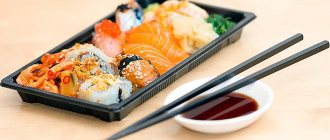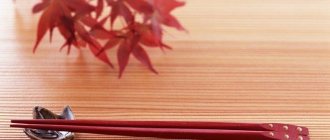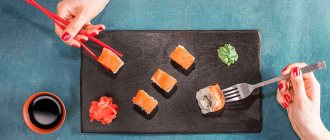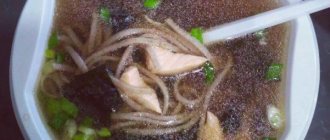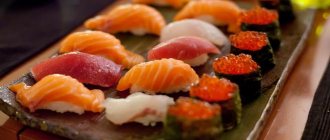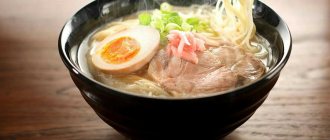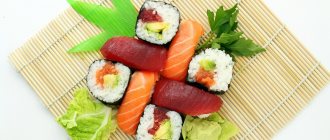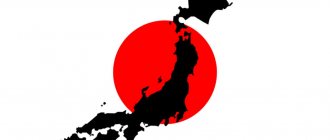What you need to know to make it work
- Chopsticks are a precise and reliable tool; you can use them to take either one grain of rice or a whole ear of corn, you just need to practice. It’s more convenient to start with medium-sized pieces; a good option is a slice of cheese. It's easiest to grab food when the chopsticks are at a 45-degree angle to the table.
- One of the sticks is always motionless: this is the base to which the second element, movable, presses the food.
- Don't hold the sticks too close to the base. It is better that only their upper third is visible above the palm. This way you will be able to grab even large pieces, and your hands will be at a greater distance from the food.
- Before use, lightly tap the ends of the chopsticks on the table or palm so that they are exactly at the same level.
- If the lower or upper ends cross, it means something is wrong and you should look for a better position for the device in your hand.
How to choose the right chopsticks
To make using chopsticks comfortable and enjoyable, it is important not only to learn how to maneuver correctly, but also to choose the right size.
To determine the size of the chopsticks for yourself, you need to know the distance between the index finger and thumb. Place your fingers so that a right angle is formed between them. The distance is measured strictly between the fingertips. The result obtained must be multiplied by 1.5. This way you will know the size you need.
Restaurants and other Chinese food establishments serve standard size chopsticks depending on the gender and age of the diner.
- For men – sticks 23 cm long.
- Women – 21 cm.
- Children under 3 years old - 13 cm, from 4 to 12 years old use chopsticks 14 cm long. From the age of 13, most children can switch to devices 20 cm long.
The sizes of the chopsticks are designed for the Chinese, who are often much smaller in parameters than Europeans. Because of this, Europeans may not find sticks of this length comfortable to use.
How to eat with chopsticks the classic way
Relax your hand. Place one stick on the nail phalanx of the ring finger and press with the base of the thumb.
Frame: LeesRandomVids/YouTube
Place the second stick in your hand as you would normally hold a pencil. Straighten your thumb and move it to find the most comfortable position. All people hold chopsticks slightly differently.
Frame: LeesRandomVids/YouTube
Try moving the second stick. To lower it, press slightly with your index finger. To pick it up, push it up with your middle finger. The thumb and first stick remain motionless.
Frame: LeesRandomVids/YouTube
This video will help you master this technique of eating with chopsticks:
Etiquette
Kuyazi are intended only for food, so it is unacceptable to perform other manipulations with them: knocking on the plate, pointing at someone, playing or licking leftover food. Dirty cutlery is wiped with a napkin, and plates are moved by hand.
It is impolite to hang your chopsticks over a common plate to search for food, touch neighboring cutlery, or push away pieces you don’t like. You need to wait until no one takes food from the plate and take the nearest piece. Having touched food, you cannot put it back, but only transfer it to your plate or eat it.
Passing food with chopsticks is considered prohibited. The Japanese use chopsticks to transfer the bones of the deceased into an urn with ashes, so this action is associated with death and is impossible when eating. The Chinese allow food to be served first to the elderly and children, and then to themselves, which is regarded as respect.
When eating with chopsticks, it is prohibited to stick them into a bowl of rice, which is done only with funeral food intended for the deceased. It is unacceptable to clench the chopsticks in a fist and cross them over the plate. During a break between meals, the Japanese place their chopsticks on a special stand so that the thin ends point to the left. In China, at the end of a meal, kuyazi is placed parallel to each other on the edges of the plate, also with the thin ends to the left.
Kuaizi has been used in China for about 3,000 years, and for those starting to use Chinese chopsticks, this art will become accessible after repeated repetition. Slow absorption of food creates harmony and allows you to perceive flavors more clearly.
How to eat with chopsticks in an alternative way
Take one stick with your thumb and forefinger.
Frame: For Us Foodies / YouTube
Without changing the position of the first stick, place the second one in your hand, as shown in the photo, and press with the base of your thumb.
Frame: For Us Foodies / YouTube
Fix the second stick with the tip of your middle finger, find the most comfortable position for you.
Frame: For Us Foodies / YouTube
Relax your hand and try, bending and unbending your index finger, to move the upper stick. The bottom one should remain motionless.
This technique of using chopsticks is shown in more detail in the video:
Excursion into the centuries
According to an ancient Eastern legend, the prototype of this cutlery was created in the 23rd-22nd centuries BC. An emperor named Yu the Great, who lived in those days, often traveled around the country. He checked the condition of the banks, which were constantly being washed away by the river. One day he was very hungry, and the broth in which the meat was cooked was unbearably hot. The emperor, without thinking twice, plucked a twig from a nearby tree, broke it into two parts, and, using the resulting wooden sticks, took his lunch out of the cauldron.
It’s hard to say whether the ancient legend is true or not, but one thing is clear: this cutlery, unusual for a European, appeared a very long time ago. Even millennia have not found anything to change in the appearance of Chinese chopsticks, thereby proving their perfection and versatility. In Asia, this device is used not only for eating food, but also for preparing it.
How to behave at an Asian table
Michael Leininger, an American etiquette specialist at China Dining Etiquette and author of the book “Etiquette Basics,” gives the following advice:
- Everywhere except Korea, it is allowed to bring a bowl of soup or rice closer to your mouth to make eating more convenient. This trick won't work with plates.
- Chopsticks are also served with soup: first, the solid ingredients of the dish are eaten with them, and then the broth is drunk or eaten with a spoon.
- With rare exceptions, eating with your hands is not allowed. If a large piece of food cannot be divided into smaller pieces (for example, a duck leg), then you need to carefully bring it to your mouth and bite it off.
- But classic sushi is the very exception: the pieces are usually taken by hand and only the fish is immersed in the sauce, the rice remains clean.
- It is believed that you should not take food from a shared plate with your chopsticks. But if there are no additional utensils next to it, simply turn the sticks over and take a piece with the thick ends.
- The owner of the house is the first to pick up the chopsticks at the table.
What are the names of Chinese chopsticks?
Archaeologists claim that Chinese chopsticks were invented in China about 3 thousand years ago (Shang era). Modern Chinese call them kuaizi. The legend said that one Chinese man broke out two small sticks and tried to get the meat that was boiling in the cauldron without getting burned. He got what he wanted. Today, the population of China can be divided into three groups based on the way they eat. Approximately 60% of the population uses chopsticks and forks (30% for each type of cutlery), the rest still eat with their hands.
Kuaizi, which are used in restaurants, most often have a length of up to 25 cm and a square base to prevent them from rolling. Weisheng kuaizi, chopsticks designed for one-time use, are also popular among the Chinese. They are not always perfectly processed, which is why they are examined for splinters before use.
What not to do
- Do not leave chopsticks sticking out of the cup or sticking them into food.
- Do not cross your wands, this is considered a bad omen.
- Do not pierce food with them, except for those moments when you need to separate one piece from another.
- Do not move plates with chopsticks on the table.
- Do not point the device at people or at the food you are asking to pass from the other end of the table.
- Don't pass food from one person to another with chopsticks: this is reminiscent of a Japanese funeral tradition.
What are chopsticks called?
For more than three thousand years, East Asians have used chopsticks as cutlery. They are called differently in different countries. So in China - kuaizi, in Korea - chokkarak, in Vietnam - Dua, in Mongolia - sabaha, and in Japan - hasi.
In the beginning, chopsticks were made from wood or bamboo. Currently, the choice of material is huge. In addition to wooden sticks, you can find plastic, metal, bone, silver and even precious metal ones.
As a rule, chopsticks are a disposable device, but at home, every Japanese has their own set of hashi, which they treat with care and respect.
Perhaps the method of eating with chopsticks gave rise to an enthusiastic and respectful attitude towards food among the Japanese. When you collect every grain of rice from the bowl, you have time to enjoy the taste and beauty of the prepared dish. By the way, Japan is the only country that uses chopsticks for both solid and liquid food.
Since 1975, Japan has celebrated Chopsticks Day on August 4, founded by the Waribashi Association. It's a day to think about chopsticks, including how to use them correctly, give thanks, and reconsider your food culture.
When you see how deftly the Japanese and Chinese eat with chopsticks, it seems that it is very simple. If you think that children master the technique of eating with chopsticks from birth, then this is not at all true. If parents give babies a spoon and fork(!) already in the first year of life, then the optimal age to teach a child to eat with chopsticks is from three to five years. You need to learn the technique correctly right away, as it stays with you for life. The indicated age is an approximate boundary and the impetus for a child’s education can be his interest in how and what his parents eat.
Japanese researcher Hachiro Isshiki conducted a study on how early use of chopsticks affects children's development. And I came to the conclusion that children who have mastered the technique of using chopsticks at the age of one year develop better than their peers.
It takes a lot of time and effort for a young child to learn how to use chopsticks correctly. After all, in fact, each finger in this process lives its own life and performs its own movements. Despite the fact that Japanese cuisine has firmly entered our lives, Europeans can probably be compared with children in the matter of mastering the technique of eating with chopsticks.
History of origin
Chopsticks appeared as cutlery in China even before our era during the reign of the Shang Dynasty, at which time they were given the name kuaizi. They were made from ivory and be used by emperors and their family members. Around the 8th century AD, they began to be used in other Asian countries.
In Japan, sticks called “hashi” were made of bamboo: they looked like tweezers with a narrow trunk that split and folded transversely. Later, separate devices began to be created, which were made from different types of wood, plastic and metal.
Types of sushi chopsticks
Another European stereotype is associated with the idea of types of chopsticks. Many people believe that there are only two or three types of sticks. In fact, there are a huge number of them. They differ in shape, length, and material of manufacture.
At first, sushi sticks were called hashi. They were available only to members of the imperial family.
Below are photos and descriptions of the most common types of sushi chopsticks:
- Wooden. In Japan, thin short hashi made of bamboo with a characteristic pattern are very popular. In Chinese cities, cheap disposable kuaizi of medium length are common. Meanwhile, rural residents of the Celestial Empire prefer chopsticks that are significantly longer and thicker than urban ones, which are convenient for removing pieces of meat or fish from a vat in the center of the table with a large family.
Wooden sushi chopsticks.
- Plastic. The appearance of plastic in society has significantly reduced the cost of cutlery and crockery. Plastic sticks are divided into heat-resistant and for cold snacks. At the same time, even heat-resistant products are not recommended for use when gripping or stirring too hot dishes.
Plastic sushi chopsticks.
- Metal. Made from silver or simple alloys. Metal chokkaraks are widely used in everyday life among residents of North and South Korea. It is believed that due to additional acupressure of the fingers during meals, such table attributes prolong the life of their owners. And silver reacts to organic poisons and can warn a person about the staleness of food. True, such chopsticks are the most inconvenient, and European gourmets often have sore fingers after eating them.
Metal chopsticks for sushi.
- Bone. In Asian culture, it is believed that the bones themselves have healing properties and that by coming into contact with them, a person receives the strength and character of the animal. For durability, they are coated with a protective layer.
Bone sticks for sushi.
- Stone. They are made primarily from jade, which is usually enclosed in a mesh or ring-shaped frame. Stone sticks can be used for their intended purpose, but they are purchased mainly when creating glamorous pictures for luxury interiors.
Jade sushi sticks.
Types of sticks
Chopsticks come in several varieties. They differ in purpose, length and other characteristics. Main types:
- Waribashi are disposable chopsticks fastened at the ends, which are served in most restaurants and cafes with Japanese, Chinese, and Korean dishes. Made from wood, plastic and bamboo, sold in sealed paper packages.
- Nuribashi are reusable devices. Most often they are made of cedar and have pointed ends.
- Standard hashi are universal, made from different materials, most often wood. Among the Japanese, they are considered a personal item on a par with a toothbrush and comb.
- Khasi for cooking vary in length (up to 30 cm), and are used for mixing dishes. Not considered a personal item.
- Gong Fai - designed for transferring food from a common plate to your own. They look like standard hashi ones.
Waribashi sticks are a disposable product without unnecessary sophistication.
In Japan, there are separate types of sticks for sweets, meat and fish dishes, tea ceremonies, and holidays. But the differences between them are insignificant and are more aesthetic than practical.
Selection rules
When choosing Khasi, you should pay attention to the material. Popular options:
- Tree . Sticks made from it are comfortable, light in weight, inexpensive, and come in different shapes and sizes.
- Metal. In the production of hashi, silver is most often used (in ancient times it was used to test food for poisons) and simple alloys: products made from them are more expensive than wood, but are more durable and durable.
- Plastic. It produces practical, cheap chopsticks, which are most often served in cafes and restaurants, but they cannot be used for eating hot dishes.
- Exotic materials - ivory, jade, marble, etc. Khasi ones are expensive, have an elaborate design, and are more often used for interior decoration in kitchens and restaurants than for their intended purpose.
Wooden sticks should be smooth, polished, without splinters or burrs.
Metal hashi are distinguished by their increased thinness and are used mainly by residents of Korea.
In addition to the material, their shape is taken into account when choosing. Beginners should choose cutlery that is square in cross-section: it is easier to pick up slippery food and your hands get less tired. People who are not used to them often get sore fingers and calluses from round hashi, especially with regular use.
Disposable chopsticks are often made from inexpensive plastic.
Sticks with thin ends are convenient. They make it easier to pick up food and bring it to the mouth, since the thicker edge maintains balance, compensating for the weight of the food with its weight.
When choosing reusable hashi, you should also pay attention to aesthetic qualities. Cutlery with painted, carved, and varnished handles will not only help you get acquainted with Asian dishes, but will also become a decoration for your kitchen.
Features of training sticks
The training sticks are fastened to each other at the ends with a movable elastic band or a special fastener made of elastic material. Some of them have a clothespin design. This feature helps to lift food using hashi as tongs or tweezers with which to clamp a piece of food.
Using training devices makes it easier to adapt your hand to them, get used to the correct movements, without fear of dropping food.
